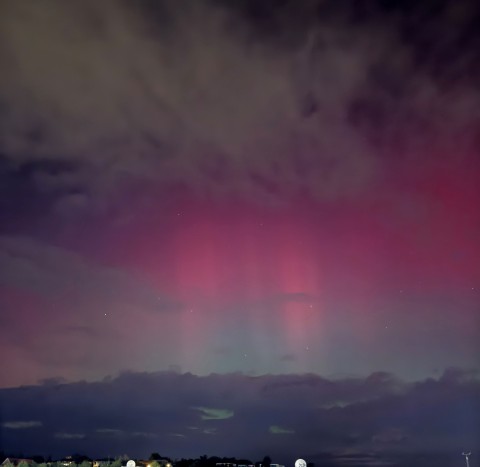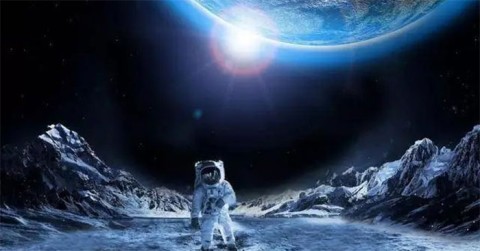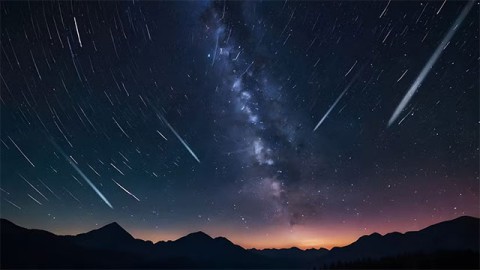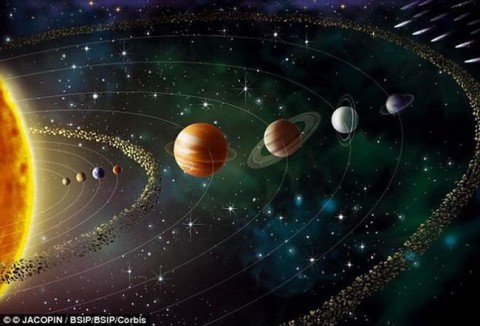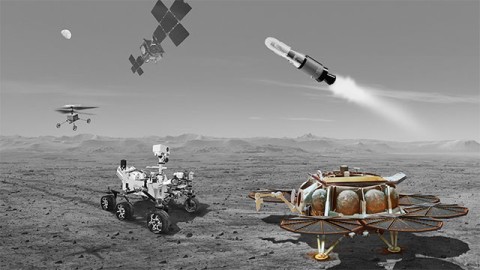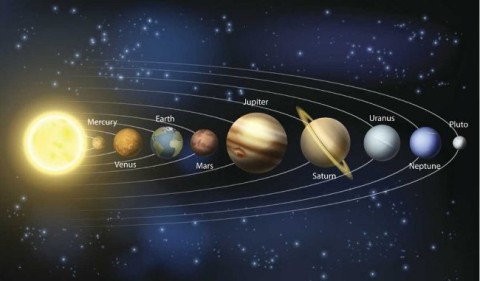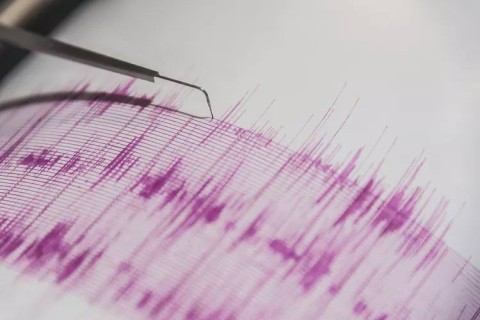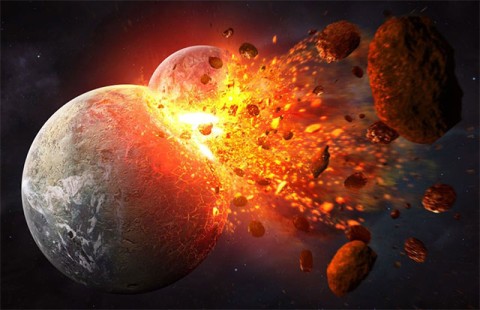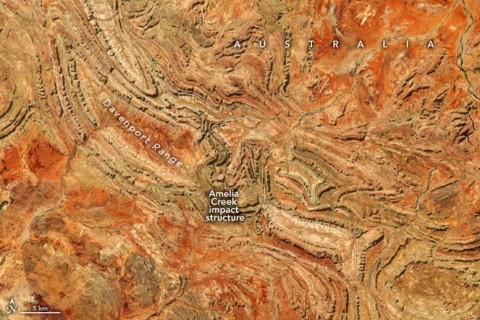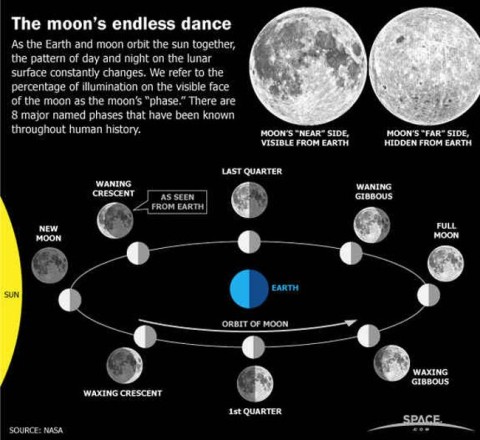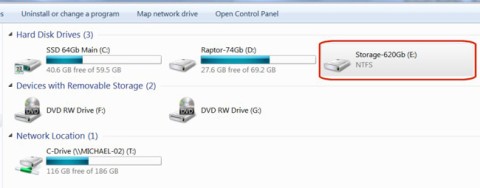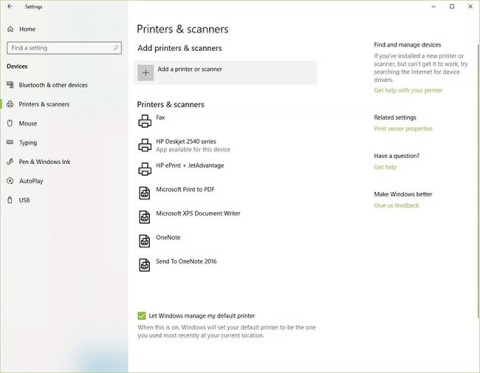What is the distance from Earth to Jupiter - the largest planet in the Solar System?
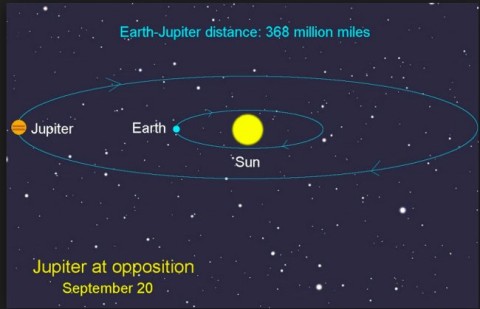
How far is Jupiter from Earth? If you don't know, this article will tell you how far Jupiter is from Earth.
The universe is truly amazing, partly because of its sheer size, but also because of the mysteries that are beyond human imagination. No matter how much we learn about space, there are always new and amazing things to discover. Here are just three of the many facts about the universe that will leave you speechless when you first hear them.
The largest known star is 2,150 times more massive than our Sun.
The Sun is so big compared to Earth that it can warm us from 93 million miles away. In fact, it’s hard to put it into perspective, but scientists estimate that the Sun is 1,287,000 times larger than Earth. The Earth’s diameter is only 7,918 miles, while the Sun’s diameter is 865,000 miles. This is a huge difference, but Sol is actually a relatively small star compared to many others in the universe.
The largest star known to astronomers is Stephenson 2-DFK 1, also known as Stephenson 2-18. It is a red supergiant located in the constellation Scutum, about 18,900 light years from Earth. Stephenson 2-18 is estimated to be about 2,150 times more massive than our Sun. Its diameter is 1,859,750,000 miles, a number so huge that no one can even fathom it.
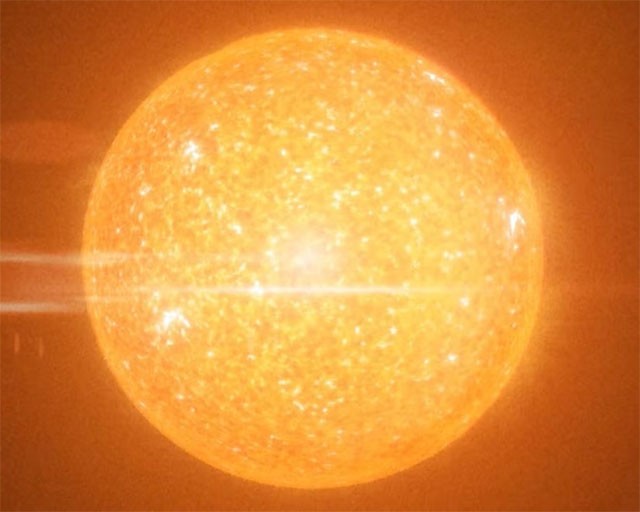
Imagine this: If Stephenson 2-18 were placed in the place of the Sun, its surface would extend to the orbit of Saturn. The star is so big that it would take 9 hours to circle its circumference at the speed of light. By comparison, the Sun takes just 14.5 seconds to circle its circumference. You could fit 10 billion Suns inside Stephenson 2-18. The star is so big that scientists are considering calling it a red supergiant instead of a regular supergiant.
It's important to note, however, that we're observing this giant star from a very distant distance—so much so that our observations and measurements have an uncertainty of up to 50%. All estimates of this star are just that: estimates. Stephenson 2-18 may not be as big as we think, but it's certainly still many times bigger than the Sun, and there are other stars that are thousands of times more massive than the Sun, such as WOH G64 and UY Scuti.
The brightest object in the universe was created by a giant black hole
When you think of bright things in space, you probably don’t think of black holes. After all, black holes absorb light due to their extremely strong gravity, which is why we see them as black. However, the reality is a little more complicated. It’s true that there is a point where a black hole’s gravity is so strong that light can’t escape, so we never see light there. But in an indirect way, black holes also produce light.
Twelve billion light years away is a supermassive black hole called J059-4351. It has a mass about 17 billion times that of the Sun and sits at the center of a galaxy packed with matter. J059-4351’s gravity is so strong that it is estimated to devour the mass of the Sun every day. Needless to say, that’s a lot of matter.
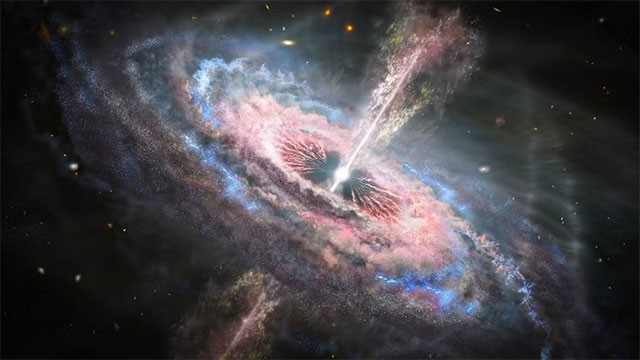
As this matter, be it gas, rock, or even stray molecules, approaches J059-4351’s event horizon, it is accelerated to near the speed of light, creating a tremendous amount of friction. This friction produces all sorts of energy, including radio waves and visible light. That’s why a meteoroid that burns up as it enters Earth’s atmosphere glows. The light released by this process is what makes a black hole’s accretion disk shine so brightly, and it’s also why you can see light around a black hole.
J059-4351 is so massive and sucks in matter at nearly the speed of light that the light it emits is 500 trillion times brighter than the Sun. It’s hard to come up with a fun analogy to help you visualize this. Just know that a trillion has 12 zeros, and we’re talking about 500 times that number.
It may be hard to believe that the brightest object in the universe is just the result of a huge amount of matter being sucked into a giant black hole at lightning speed. But 40% of the mass involved in this process is converted into energy, making it one of the most efficient natural processes in the universe. Compare that to the thermonuclear fusion reaction in the Sun, which converts less than 1% of matter into energy. That’s truly astonishing.
Most of the Solar System's Mass Is Located in the Sun
To us humans, Earth seems huge. It takes forever to travel the circumference of the blue planet. You could dig for miles and still not reach the core. The planet weighs billions of billions of kilograms. Yet it is dwarfed by other planets like Jupiter and Saturn. Our solar system is not very diverse, consisting of just a few planets, moons, and asteroids floating around, and of course the centerpiece is the Sun.
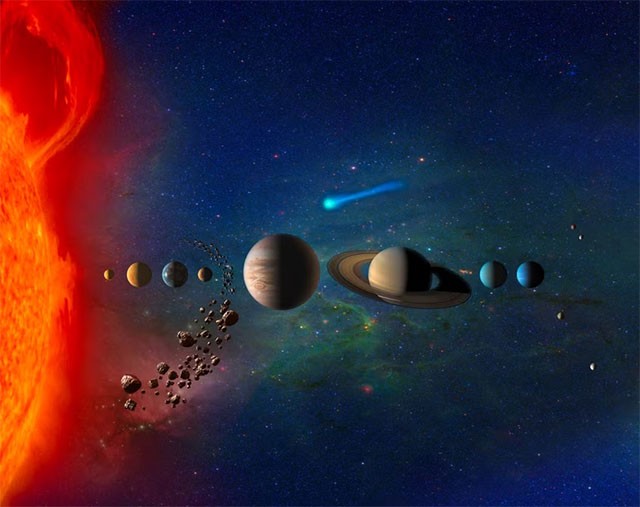
Still, you might be surprised to learn that 98.86% of the mass in the solar system is contained within the sun. All other objects in the solar system, including all the planets, moons, and floating rocks, account for only 1.14% of the remaining mass. Even Earth accounts for only about 0.1% of the solar system's mass.
This shows how big the universe really is. Even if we added up all the other planets in our solar system, Jupiter would still have 2.5 times the mass of all of them combined. But the Sun is nearly 100 times the mass of Jupiter, and there are stars out there that make our Sun look like a mere speck of dust.
How far is Jupiter from Earth? If you don't know, this article will tell you how far Jupiter is from Earth.
The period from October 6 to 13 is an exciting week for the skywatching community, as stunning auroras are visible in many locations around the world.
The time for the Moon to revolve around the Earth is about 27.3 days, while the Earth rotates once around its axis in 24 hours (one day - night).
Several times a year, the deep night sky above us puts on a spectacular show of lights streaking through the darkness.
What does the sun revolve around is a question that many people are interested in. Does the sun rotate? Let's find out together!
It's been a week since Firefly Aerospace's Blue Ghost mission began its journey to the Moon, carrying NASA's scientific instruments and aiming to perform the second commercial soft landing on the planet's surface.
NASA has big goals for Mars. The agency wants to collect the first samples from the Martian surface and return them to Earth in an ambitious mission called Mars Sample Return.
What is the hottest planet in the solar system? If you want to know which is the hottest star in the solar system, this article will give you the answer.
How big is the diameter of the solar system? This article will give you the answer.
Do you know the history of the formation of the Earth? If you do not know the history of the Earth, this article will give you the answer.
The Earth's mantle is the thick layer of hot, solid rock that lies between the Earth's crust and the molten iron core. It makes up the bulk of the Earth, accounting for two-thirds of the planet's mass.
Throughout the history of human astronomical research, one of the most familiar and studied objects is the Moon.
About 600 million years ago, Earth was home to strange, soft-bodied sea creatures. However, a massive asteroid impact in what is now northern Australia may have wiped out this ecosystem.
The full moon is a common astronomical phenomenon that only appears once a month. What is the special meaning of the full moon and when does it appear? Let's find out with Quantrimang.com!
Diet is important to our health. Yet most of our meals are lacking in these six important nutrients.
At first glance, AirPods look just like any other true wireless earbuds. But that all changed when a few little-known features were discovered.
In this article, we will guide you how to regain access to your hard drive when it fails. Let's follow along!
Dental floss is a common tool for cleaning teeth, however, not everyone knows how to use it properly. Below are instructions on how to use dental floss to clean teeth effectively.
Building muscle takes time and the right training, but its something anyone can do. Heres how to build muscle, according to experts.
In addition to regular exercise and not smoking, diet is one of the best ways to protect your heart. Here are the best diets for heart health.
The third trimester is often the most difficult time to sleep during pregnancy. Here are some ways to treat insomnia in the third trimester.
There are many ways to lose weight without changing anything in your diet. Here are some scientifically proven automatic weight loss or calorie-burning methods that anyone can use.
Apple has introduced iOS 26 – a major update with a brand new frosted glass design, smarter experiences, and improvements to familiar apps.
Yoga can provide many health benefits, including better sleep. Because yoga can be relaxing and restorative, its a great way to beat insomnia after a busy day.
The flower of the other shore is a unique flower, carrying many unique meanings. So what is the flower of the other shore, is the flower of the other shore real, what is the meaning and legend of the flower of the other shore?
Craving for snacks but afraid of gaining weight? Dont worry, lets explore together many types of weight loss snacks that are high in fiber, low in calories without making you try to starve yourself.
Prioritizing a consistent sleep schedule and evening routine can help improve the quality of your sleep. Heres what you need to know to stop tossing and turning at night.
Adding a printer to Windows 10 is simple, although the process for wired devices will be different than for wireless devices.
You want to have a beautiful, shiny, healthy nail quickly. The simple tips for beautiful nails below will be useful for you.
